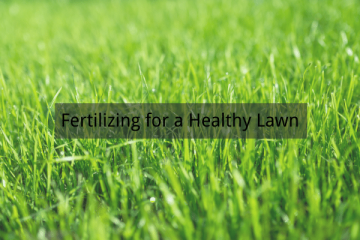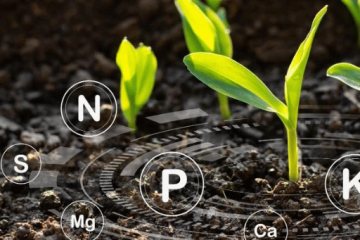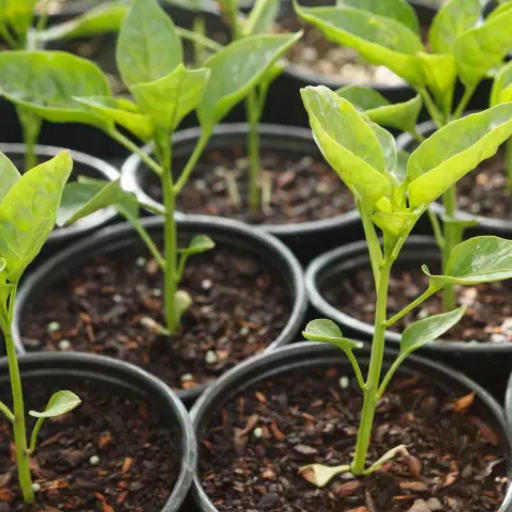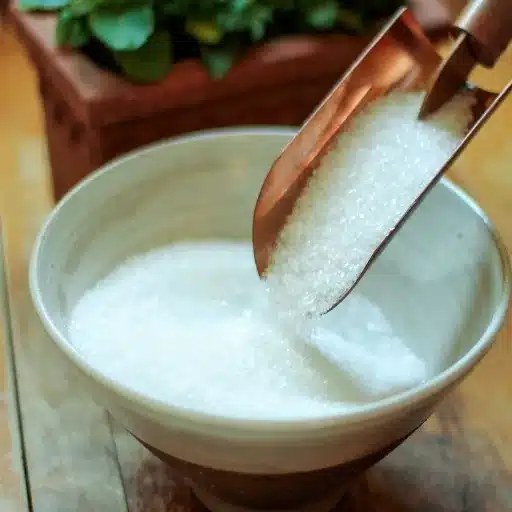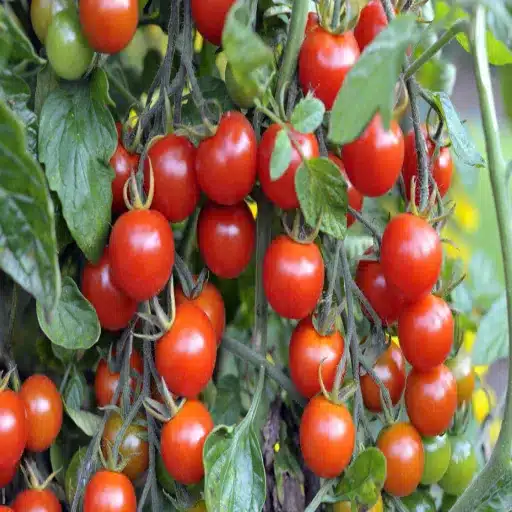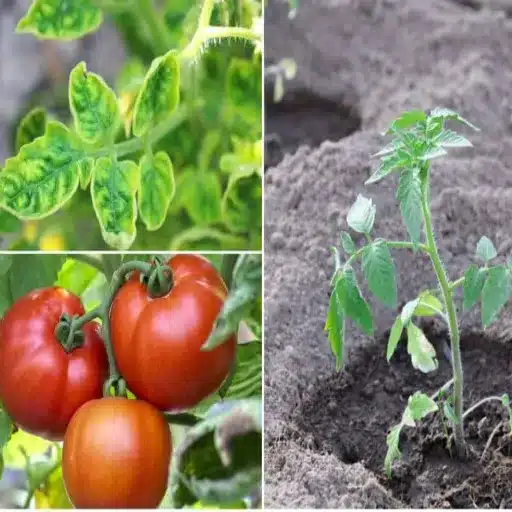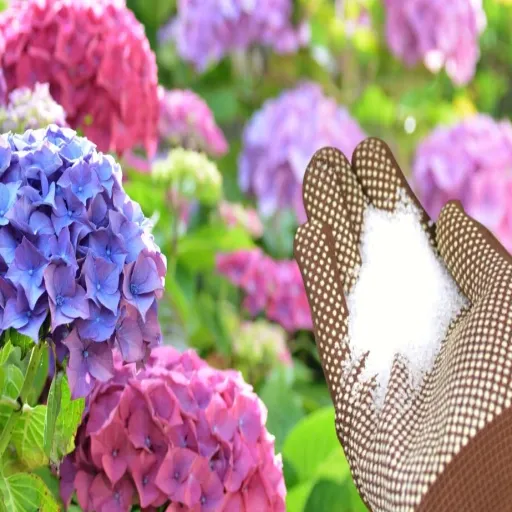Epsom salt, composed of magnesium sulfate, is often overlooked as a powerful natural remedy for enhancing plant health and growth. This article will explore the science behind Epsom salt’s effects on plants, focusing on its ability to improve soil nutrient availability, address specific deficiencies, and optimize plant vitality. By incorporating Epsom salt into your gardening routine, you can witness remarkable transformations—from dull, underperforming crops to lush, thriving greenery. Through detailed analysis and practical applications, this guide will illustrate the before-and-after impacts of using Epsom salt, helping you better understand how and why it can make a difference in your plant care strategies.
What are the benefits of using Epsom salt for plants?
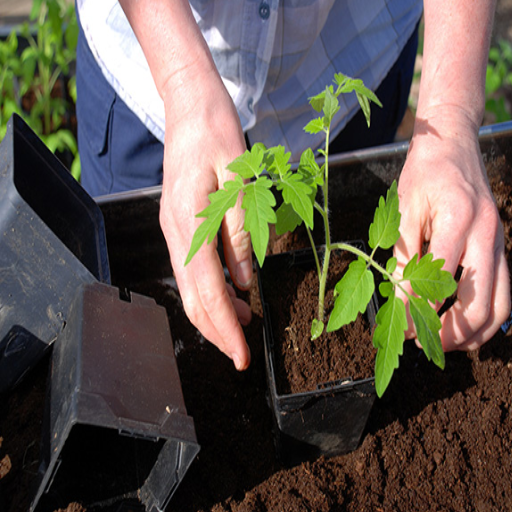
How does Epsom salt provide essential nutrients to plants?
Plants are nourished with essential nutrients by epsom salt in the form of magnesium sulfate (MgSO₄). Magnesium is an indispensable part of chlorophyll, the molecule that makes photosynthesis happen, allowing plants to harvest sunlight as energy. Moreover, sulfate plays a major role in essential amino acids as well as protein formation, both of which support the development of the plant. In my particular case, I find that Epsom salt prevents magnesium deficiency during the appearance of yellowing leaves or stnampered growth.
- Magnesium Content: It contains about 10% magnesium, giving an adequate supply to prevent chlorosis.
- Sulfur Content: It Contains about 13% sulfur, which helps in amino acid production.
- Solubility: It can be applied as a foliar solution or soil conditioner since it dissolves easily in water.
These factors justify its widespread use as a fertilizer enabling plants to receive proper nutrition.
Can Epsom salt improve plant growth and blooming?
Indeed, Epsom salt is known to boost plant growth and flowering if used properly. This is because of its magnesium and sulfur constituents which are two important nutrients in the growth of plants. Magnesium helps to make chlorophyll which is a requirement for photosynthesis, while sulfur helps to form essential amino acids and proteins.
- Magnesium (Mg): Epsom salt has about 10 percent magnesium. Magnesium is a very important nutrient that prevents chlorosis and enhances the good growth of plants.
- Sulfur (S): With the presence of about 13 percent sulfur, it improves the synthesis of amino acids and enhances the metabolism of the plant as a whole.
- Solubility: Epsom salt is soluble, which means it dissolves easily in water making it advantageous when used as a foliar spray or amendment to soil because the plant can absorb it easily.
To sum up, while providing magnesium and sulfur, Epsom salt does increase the rate of photosynthesis, and absorption of nutrients as well as flowering hence improving the quality of growth and blooms in plants.
How do I apply Epsom salt to my plants?
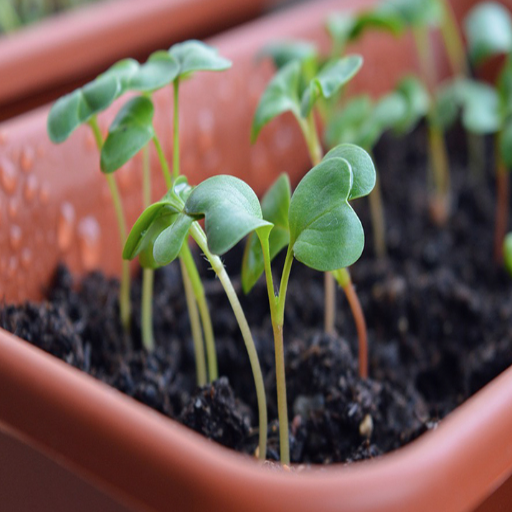
What’s the proper ratio of Epsom salt to water for plant application?
The ratio of Epsom salt to water can vary based on the technique of application as well as the requirements of the plants being cared for:
- For foliar sprays: Mix one tablespoon of Epsom salt with one gallon of water. This enables effective absorption through the leaves. Apply evenly and refrain from spraying during peak hours of sun to reduce the chances of leaf burns.
- For soil amendment: Dissolve Epsom salt in water at the rate of 1 to 2 tablespoons per gallon. Directly apply it to the soil around the base of the plant. This assists in adding magnesium and sulfur to the soil while boosting nutrient absorption.
- For potted plants: To prevent salt from accumulating in the restricted soil, do not use more than 1 teaspoon per gallon of water.
This approach minimizes the chance of excessive application which can lead to adverse effects on the health of the plant. Remember that some species tolerate or benefit from variation, always keep in mind the requirements of the plants in question.
Should I use Epsom salt as a foliar spray or soil drench?
The decision to use Epsom salt as a foliar application or a soil drench is determined by the condition of the plant. Magnesium and sulfur deficiencies need to be corrected as a priority.
A foliar spray is perfect for rapid absorption because the nutrients are needed right away. For Epsom salt foliar application, one tablespoon of Epsom salt would be mixed with a gallon of water. The mixture is then sprayed on the leaves covering both the upper and lower surfaces. This technique is very useful during the growing stage of the plants because they can soak up many nutrients.
However, for gradual supplementation of magnesium and sulfur around the zone of the root, a soil drench works better. For this, I would advise a weaker solution of 1 teaspoon of Epsom salt to a gallon of water directly at the base of the plant. This concentration helps cover the nutrients without the addition of salt which can harm the roots.
Both strategies make sense depending on the plant’s deficiency conditions and the mechanisms for absorbing nutrients. When it comes to regular upkeep, soil drenching is the go-to method, whereas, for quick fixes, foliar spraying is ideal.
Which plants benefit most from Epsom salt treatments?
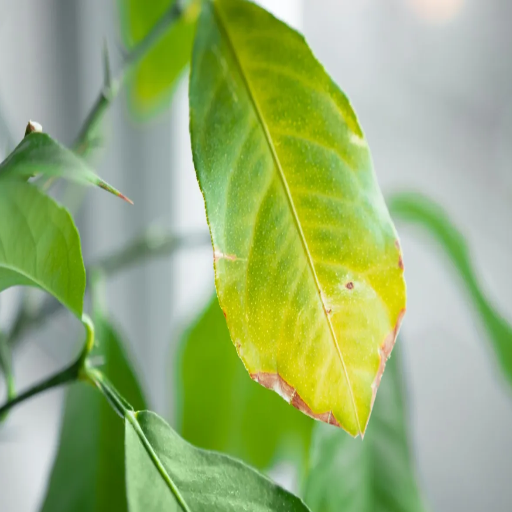
Are tomato plants good candidates for Epsom salt applications?
Tomatoes are an outstanding option for Epsom salt treatment because they express requirements for the nutrients needed to grow. These nutrients are magnesium and sulfur. Magnesium is critical for the synthesis of chlorophyll and the process of photosynthesis while sulfur is important for the synthesis of proteins and the general well-being of the plant. Symptoms of deficiency, such as interveinal chlorosis, which is yellowing between the veins of the leaves, can show up which is a sign of magnesium deficiency and Epsom salt is perfect at resolving this issue.
- Dosage: For foliar sprays or soil drenches use the ratio of one tablespoon of Epsom salt per gallon of water. Magnesium Epsom salt treatment is best utilized if the ratio is never exceeded, otherwise, the plants are at risk of undernourishment.
- Frequency: Make sure to apply every two weeks for sprays and once every month for soil drenching to properly maintain nutrient balance.
- Timing: The greatest demand for magnesium happens when the plants are flowering and fruiting, so you should make sure to use the treatments during these periods.
- pH Compatibility: Apply Epsom salt in soil that has a 6.0 to 6.8 pH, as this is the optimum range for magnesium absorption. Change the pH to the recommended value before applying Epsom salt if needed.
- Application Method: Rapid symptom correction relies on foliar sprays whereas soil drenches rely on enduring effects of plants with roots.
Following these guidelines helps epsom salt boosts tomato plant vigor, improving photosynthesis, fruit yield, and overall health. However, it is essential to test the soil for magnesium deficiency before starting any treatments to avoid excess nutrients.
How can Epsom salt help Boston ferns and other houseplants?
For Boston ferns and other houseplants, Epsom salt can be beneficial as its magnesium and sulfur deficiency fosters chlorophyll production and the overall well-being of the plant. Magnesium is critical for photosynthesis while sulfur assists in the formation of proteins and enzymes. The presence of yellow leaves or retarded growth indicates symptoms of deficiency which can be rectified by the use of Epsom salt.
- Concentration: 1-2 teaspoons of Epsom Salt per gallon of water can be dissolved to have a foliar spray or watering solution. Use the lower concentration for more regular maintenance.
- Frequency: Epsom salt can be applied every 4-6 weeks for maintenance or as-needed deficiency correction.
- Justification: Epsom salt’s Magnesium and sulfur are readily soluble in water allowing immediate availability to plants. They do not pose a risk for soil salinity buildup when used properly.
Always confirm deficiencies with a soil or foliage analysis before overapplication to avoid nutrient imbalances. Epsom salt used properly on herbaceous plants guarantees lush growth and beautifully colored leaves.
Can Epsom salt improve the health of my lawn?
Yes, if used properly, Epsom salt can enhance lawn health. Its magnesium (Mg) and sulfur (S) content promote chlorophyll synthesis and intake, both vital for nutrient-rich, green growth.
- Application Rate: Add 1–2 tablespoons of Epsom salt to one gallon of water and mix. Use about 2 gallons of the mixture to cover every 250 square feet of lawn area.
- Goes Well With: Apply during growth period every 4–6 weeks.
- Reason: Magnesium helps in improving photosynthetic efficiency, while sulfur improves nitrogen assimilation in grass. When used properly, Mg and S become soluble and act quickly without leading to soil salinity problems.
For optimum benefits, do a soil test first to check magnesium or sulfur deficiencies need to be done because, if not, it will cause problems due to over-nutrients. Epsom salt improves the strength and color of the turf if and when used properly.
What are the visible effects of Epsom salt on plants?
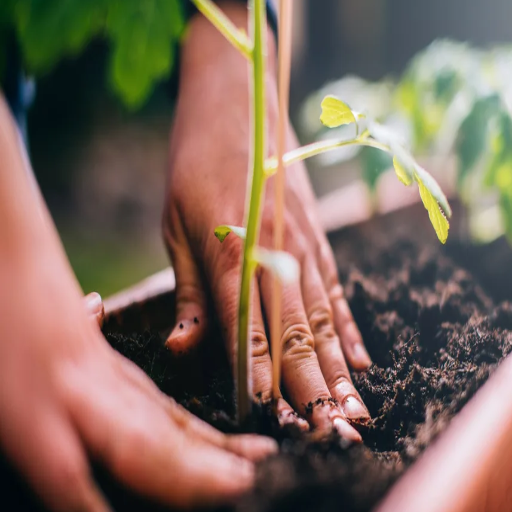
How quickly can I expect to see changes after applying Epsom salt?
The effects of Epsom salt on plants can be noted within 24 to 48 hours under optimal conditions. This is largely due to the salt’s rapid solubility, which allows magnesium and sulfur to be absorbed quickly by the roots or through the leaves. Particular aspects that influence these timelines are:
- Application method: Nutrient uptake is faster through foliar application than soil absorption. This is primarily because processes in the soil are bypassed.
- Plant health and stage of growth: Actively growing plants can show visible changes much quicker than their stagnated counterparts. This includes bringing out new leaves.
- Environmental conditions: Sufficient sunlight, water, hydrated support IP, and soil pH (ideally between 6.0 and 7.0) allow for the effective assimilation of nutrients.
Simply put, magnesium directly affects chlorophyll production and sulfur affects protein synthesis. Both of these factors have a large impact on plant health and can be visually observed. Taking these parameters into account increases efficient nutrient application while eliminating risks of losses or delays.
What improvements in leaf color and growth can I observe?
From what I have observed, the modifications in the color of the foliage as well as the increase in growth seem to be the most reliable signs of optimal plant health. When the amount of nutrients is adequate, I observe a greater greenness in the leaves which can support more chlorophyll which is usually the case when magnesium is present in sufficient amounts. Also, vigorous protein synthesis is observed when sulfur is abundant, and this subsequently results in more robust and healthy foliage.
- Magnesium (Mg): Enables greater formation of chlorophyll and leaves that are greener and more photosynthetic. This deficient condition is often accompanied by interveinal chlorosis.
- Sulfur (S): Important for constructing crucial proteins and therefore enhanced growth of all aerial parts of the plant.
- pH Range: The bioavailability of magnesium and sulfur for philosophers may be maximized when soil pH is maintained between the 6.0 and 7.0 range.
- Environmental Conditions: Dominant Sunlight, adequate water supply, and rich but well-drained soils are essential to increase the growth and health of the foliage of the plant.
I can achieve significant changes in leaf color and growth by consistently monitoring and tweaking these parameters toward desired levels.
Are there any precautions when using Epsom salt for plants?
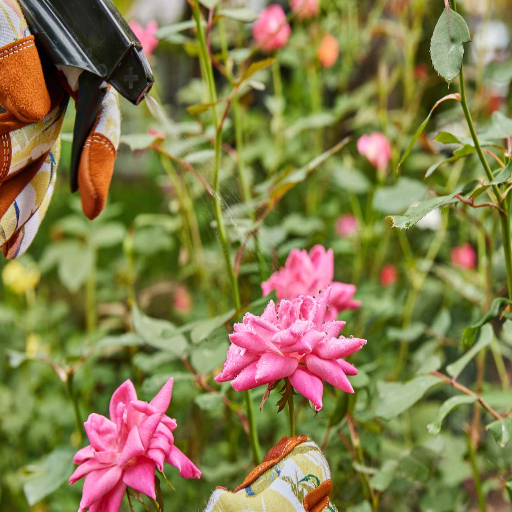
Can overuse of Epsom salt harm my plants?
Epsom salt does harm my plants, especially with overuse. Plants have a balanced nutrient system, and an undue application of Magnesium will disrupt the balance. Its excessive use can lead to Magnesium Chlorosis which can cause a deficiency of potassium and calcium. The imbalances will affect the plant, reducing growth vigor along with overall health. To avoid this, I stick to the following:
- Dosage: I restrict the concentration to 1 tablespoon in 1 gallon and apply it once a month for routine usage. For spays, I would further dilute the mixture because high temperatures can scorch the leaves.
- Timing: Magnesium should be supplied based on symptoms like quantity needed and the visible signs of Magnesium Chlorosis (interveinial chlorosis).
- Monitoring Soil Health: Periodic magnesium tests on the soil are required whenever the level goes beyond the acceptable norms (25 to 50) along with the ratio of associated nutrients and their balance.
It is important to be cautious. Making adaptations to the application based on soil conditions and the requirements of the plant has greatly reduced the risks associated with Epsom salt while still keeping the plant healthy.
Does Epsom salt affect soil pH?
Epsom salt (magnesium sulfate) exhibits neutral pH levels and therefore does not modify the pH of soil significantly within its application. Its contribution is giving magnesium and sulfur as a source without changing the acidity or alkalinity of the soil. Yet, overuse can over time indirectly affect soil balance due to competition or excessive accumulation of nutrients.
- Application of Rates: For soil applications, I follow the prescribed dosage which is 1 tablespoon per gallon of water, and later modify for individual plants as required.
- Frequency of Use: I make sure to restrict my application to once a month to reduce excess nutrient collection.
- Monitoring of pH and Nutrient Levels: I regularly test the soil to make sure that there is adequate magnesium and sulfur present while ensuring that an imbalance that could affect the pH stability is not created.
If applied in moderation, Epsom salt can be an excellent supplement without affecting the pH of the soil.
Are there any plants that should not be treated with Epsom salt?
As an example, many native grasses and desert plants do not benefit from Epsom salt applications and instead face negative effects because they naturally thrive in magnesium-deficient and sandy soils. These same plants should be avoided with Epsom salt applications because they are sensitive to excessive nutrients.
- Plan Nutritional Requirements: Research and confirm if the plant species is truly deficient in magnesium or requires supplementation of it. Plants that have adapted to environments that are magnesium deficient should not be treated with Epsom salt.
- Existing Soil Conditions: Conduct a baseline soil test of your soil to analyze what the magnesium and sulfur levels are. Increasing these levels with the application of Epsom salt could result in nutrient imbalances which could harm plant growth.
- Deficiency or Sensitivity Signs: In cases where plants display interveinal chlorosis where portions of interveins in older leaves turn yellow should be the primary focus for Epsom salt applications. Application should be avoided for healthy or overly fertilized plants.
Taking these steps allows me to understand where Epsom salt is needed and avoid applying it in conditions where it can cause harm and upset my soil’s natural nutrient balance.
Reference sources
Frequently Asked Questions (FAQs)
Q: What are the benefits of epsom salt for plants?
A: Epsom salt can be highly beneficial for plants. It provides essential nutrients like magnesium and sulfur, which are crucial for chlorophyll production and overall plant health. Epsom salt can help improve seed germination, enhance nutrient absorption, promote stronger root systems, and increase flower and fruit production in several plants.
Q: How do I discover the benefits of epsom salt in my garden?
A: To discover the benefits of epsom salt in your garden, start by applying it to a few plants and observing the results. You can add epsom salt to the soil around plants, use it as a foliar spray, or incorporate it into your regular fertilization routine. Compare treated plants with untreated ones to see the difference in growth, color, and overall health.
Q: How much epsom salt should I add to my plants?
A: The amount of epsom salt to add depends on the plant and application method. For general use, mix 1 tablespoon of epsom salt per gallon of water and apply monthly. For seedlings, use a weaker solution of 1 teaspoon per gallon. When planting, you can put a handful of epsom salts in the hole before placing the plant. For larger areas like lawns, use 3 pounds of epsom salt per 1,250 square feet.
Q: Can I use epsom salt for an epsom salt bath for my plants?
A: While “epsom salt bath” typically refers to human use, you can create a similar solution for plants. Mix epsom salt and water to create a nutrient-rich spray or soak for your plants. This can be especially beneficial for plants showing signs of magnesium deficiency. However, avoid overuse as it may affect the soil’s pH and nutrient balance.
Q: Is epsom salt good for all types of plants?
A: While epsom salt can be beneficial for many plants, it’s particularly good for plants that need magnesium, like tomatoes, peppers, and roses. However, not all plants need additional magnesium, so it’s important to research your specific plants’ needs. Overuse of epsom salt can be harmful, so always follow recommended guidelines and observe your plants’ responses.
Q: How can epsom salt help with seed germination?
A: Epsom salt can help with seed germination by providing magnesium, which is crucial for seed development. To use epsom salt for germination, mix 1 tablespoon of epsom salt per gallon of water and use this solution to water your seeds. This can lead to stronger seedlings and improved germination rates. However, use sparingly as too much can inhibit growth.
Q: Can epsom salt be used as a fertilizer substitute?
A: While epsom salt can be used to supplement your plant’s nutrient needs, it should not be used as a complete fertilizer substitute. Epsom salt provides magnesium and sulfur but lacks other essential nutrients like nitrogen, phosphorus, and potassium. Use Epsom salt in conjunction with a balanced fertilizer for optimal plant health.
Q: How do I apply Epsom salt to my lawn?
A: To apply Epsom salt to your lawn, mix 3 pounds of epsom salt with water for every 1,250 square feet of lawn. You can apply this solution using a sprayer or by broadcasting dry epsom salt before watering. Apply in spring and fall for best results. This can help create a greener, lusher lawn, but be cautious not to overuse it as it may affect soil pH.

